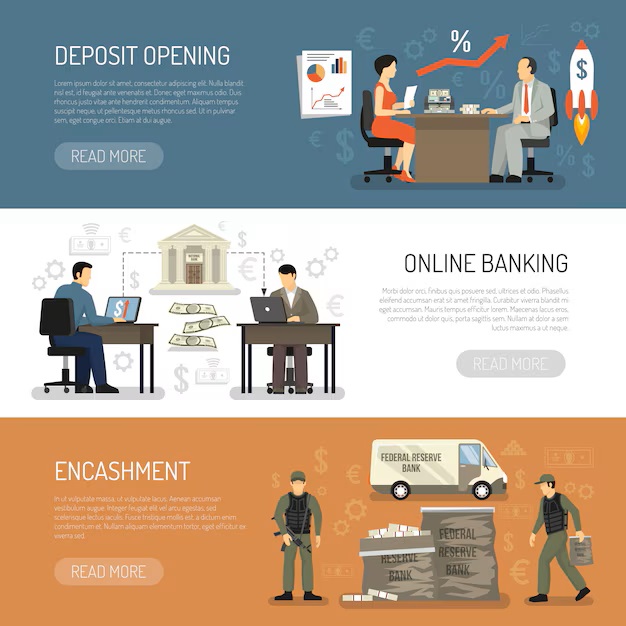In today’s complex socio-economic landscape, the array of initiatives provided by public entities plays a pivotal role in shaping citizen experiences and enhancing community welfare. These initiatives encompass diverse functions that not only aim to meet specific needs but also foster a sense of collective responsibility and engagement among individuals.
Examining the facets of available programs reveals a multitude of factors that influence their effectiveness. While many of these offerings present significant advantages in promoting social equity and access to essential resources, potential challenges and limitations often accompany them, warranting a closer look. The interplay between what is provided and the actual impact on the populace creates a dynamic that is both intriguing and complex.
By delving into this topic, one can gain insights into the various components that make up public endeavors. As we shed light on the intricacies involved, it is crucial to weigh the pros and cons to foster a comprehensive understanding of their implications on society as a whole.
Understanding Government Service Offerings
This section delves into the various provisions supplied by public institutions, highlighting their significance in addressing community needs. It aims to illuminate the layers of assistance available to citizens, ensuring an informed perspective on what can be accessed and utilized.
Types of Offerings
The array of offerings can include educational support, healthcare initiatives, and social welfare programs, each tailored to enhance the quality of life for individuals. Moreover, these initiatives often extend beyond mere provision of aid, fostering a sense of inclusion and promoting civic engagement.
Challenges in Accessibility
Despite the advantages these provisions present, challenges may arise in their accessibility and effectiveness. Factors such as bureaucratic procedures, funding limitations, and public awareness can hinder optimal utilization. It is crucial for stakeholders to recognize these barriers to improve participation and achieve intended outcomes.
Benefits of Expanding Service Range
Broadening the scope of offerings can lead to numerous advantages that enhance overall effectiveness and customer satisfaction. By diversifying what is available, organizations are better positioned to meet the needs of a wider audience, thereby improving their impact and reach. This strategic approach can foster innovation, attract new clientele, and solidify existing relationships.
One significant merit of increasing the variety of options is the potential for increased revenue streams. With a broader array of choices, there is a greater chance to tap into different market segments, allowing for improved financial stability. Additionally, such diversification can mitigate the risks associated with market fluctuations, enabling a more resilient operational model.
Another key advantage is the enhancement of user experiences. By catering to diverse preferences and requirements, organizations demonstrate a commitment to inclusivity and responsiveness. This, in turn, bolsters public perceptions and increases trust, ultimately leading to long-term loyalty.
Furthermore, expanding offerings can stimulate creative thinking within the organization. By encouraging teams to explore new ideas and solutions, the collective knowledge and skills can grow significantly. This culture of innovation not only improves current practices but also lays the groundwork for future advancements.
Lastly, a broader selection can foster collaborative partnerships with other entities. As organizations seek to complement their offerings, they can create alliances that benefit all parties involved, strengthening networks and enhancing collective capacity.
Challenges in Implementing New Services
Introducing innovative solutions within a structured framework often encounters various obstacles. These challenges can stem from numerous sources, including bureaucratic hurdles, resource limitations, and societal resistance. Understanding these issues is essential for creating effective strategies that can nurture successful undertakings.
Resource Constraints
Financial limitations frequently pose a significant challenge when launching fresh initiatives. Allocating necessary funding can often lead to conflicts with existing priorities, making it hard to garner support for new projects. Additionally, human resources may be stretched thin, affecting the ability to staff initiatives appropriately and leading to potential burnout among personnel.
Resistance to Change
Another considerable barrier is the reluctance from both employees and the general public to embrace new methodologies. This resistance can result from fears about job security, skepticism about effectiveness, or simply a preference for familiar systems. Engaging stakeholders early in the process and demonstrating the value of change are crucial steps in overcoming this reluctance and encouraging acceptance.
Impact on Community Engagement
Involvement of citizens in local initiatives plays a crucial role in fostering a vibrant society. The relationship between individuals and the jurisdiction can significantly enhance both personal fulfillment and collective well-being. Emphasizing proactive interaction encourages transparency, trust, and collaboration.
Active participation can lead to various outcomes:
- Improved communication among residents and local entities.
- Greater sense of belonging and connection within neighborhoods.
- Encouragement of diverse perspectives that shape community policies.
- Enhanced accountability of leadership towards public needs.
While there are various advantages to increased community involvement, challenges can also arise:
- Potential for conflicting opinions that may lead to division.
- Disparities in engagement levels among different demographic groups.
- Risk of misinformation spreading during discussions.
Ultimately, it’s essential to foster a culture where engagement is welcomed and nurtured. This can lead to lasting improvements in the societal fabric, ensuring all voices are heard and valued.
Evaluating Cost-Effectiveness of Services
Assessing the financial viability of offerings is crucial for ensuring sustainable practices and optimal resource allocation. By rigorously analyzing expenditures and outcomes, entities can ascertain the value derived from their initiatives. This process not only aids in identifying areas for improvement but also strengthens decision-making for future projects.
Key Considerations in Cost Evaluation
When examining the economic efficiency of initiatives, several factors warrant attention:
- Initial Investment: The upfront costs associated with launching a program can significantly impact overall viability.
- Operational Expenses: Ongoing costs, including maintenance and staffing, must be accounted for in the long-term analysis.
- Return on Investment (ROI): Measuring the gains relative to the expenditures offers insights into the overall performance.
- Quality of Outcomes: Assessing the effectiveness of results is as important as the financial metrics, as high-quality outcomes often justify higher costs.
Strategies for Improvement
To enhance the cost-effectiveness of initiatives, a proactive approach can be employed:
- Conduct regular reviews of financial data to identify trends and areas of concern.
- Implement performance metrics to evaluate the efficacy of programs and inform adjustments.
- Encourage stakeholder feedback to gather diverse perspectives and foster innovation.
- Prioritize transparency in financial reporting to build trust and accountability.
Overall, a comprehensive examination of financial performance enables organizations to foster efficiencies, improve outcomes, and navigate fiscal challenges more effectively.
Innovative Trends in Public Sector Services
Recent developments in the public sphere are reshaping how entities interact with their communities. New methodologies and technologies are emerging, aimed at enhancing efficiency and responsiveness. These advancements not only streamline processes but also foster deeper engagement between authorities and citizens, paving the way for a more inclusive approach to governance.
Digital Transformation
As society increasingly embraces technology, digital transformation stands at the forefront of novel advancements. Leveraging platforms such as mobile applications and online portals enables individuals to access resources and connect with relevant bodies swiftly. This shift towards digital engagement encourages transparency, allowing for real-time updates and feedback from the populace.
Collaborative Approaches
Moreover, nascent partnerships between the public sector and private organizations are becoming prevalent. By fostering collaboration, these alliances harness diverse expertise and resources, resulting in innovative solutions tailored to specific societal needs. The blending of agendas cultivates an environment conducive to creative problem-solving, ultimately enriching the overall experience for citizens.
Future Outlook for Government Services
The landscape of public sector offerings is on the brink of significant transformation. As society evolves and technology advances, there is a growing expectation for institutions to adapt and innovate. This shift not only addresses the needs of citizens but also enhances the efficiency and effectiveness of operations within these organizations.
Technological Innovations
One of the most promising directions for future offerings lies in the integration of cutting-edge technologies. Artificial intelligence, blockchain, and data analytics are poised to revolutionize how public institutions operate, providing more streamlined and transparent processes. These advancements can lead to increased accessibility, allowing citizens to interact more conveniently with bureaucratic entities.
Shifting Citizen Expectations
As individuals become more accustomed to seamless digital experiences in private sectors, their expectations for public entities are rising accordingly. The demand for personalized interactions, real-time communications, and easy access to information is reshaping the dialogue between citizens and institutions. Meeting these expectations is essential for fostering trust and engagement in the long run.
Q&A: Government service range opportunities with pros cons
What are the primary benefits of exploring government service range opportunities?
Exploring government service range opportunities offers several benefits, including enhanced public service delivery, improved accessibility for citizens, and the potential for increased collaboration between different governmental departments. These opportunities can lead to more efficient use of resources and better alignment of services with the actual needs of the community. Furthermore, expanding the range of services can create more job opportunities within the public sector, stimulating economic growth and improving quality of life for citizens.
What drawbacks should be considered when expanding government services?
While there are many benefits, expanding government services also comes with drawbacks. One significant concern is the potential for increased bureaucracy, which can lead to inefficiencies and slower response times. Additionally, there may be significant costs associated with training personnel, maintaining new services, and ensuring quality. There is also a risk of overextending government resources, which could lead to unintended consequences such as reduced service quality or increased taxes. Ultimately, careful planning and evaluation are crucial to mitigate these risks.
How can citizens get involved in shaping government service range opportunities?
Citizens can play an essential role in shaping government service range opportunities by providing feedback and participating in public consultations. Many government agencies hold community forums or surveys to gather input from residents about their needs and expectations. Additionally, individuals can engage with local representatives to advocate for specific services or improvements. Finally, active participation in civic organizations or advocacy groups focused on public service can amplify citizens’ voices and ensure that their concerns are addressed in government planning.
Are there specific examples of successful expansions in government services?
Yes, there are numerous examples where governments have successfully expanded their service offerings. One notable instance is the implementation of comprehensive online services for tax filing and renewal of licenses, which has simplified processes for citizens and increased participation rates. Another example can be drawn from the public health sector, where the introduction of telehealth services during the COVID-19 pandemic allowed for continued access to healthcare while maintaining social distancing guidelines. These expansions often lead to higher satisfaction and efficiency, demonstrating the potential for effective governmental service range opportunities.
What role does technology play in enhancing government service range opportunities?
Technology plays a crucial role in enhancing government service range opportunities by streamlining processes and improving accessibility. Digital platforms allow for easier access to services, enabling citizens to interact with government agencies online, submit applications, and receive information without needing to visit physical offices. Moreover, data analytics can help governments identify trends in service use and optimize resource allocation accordingly. Tools like mobile applications and social media also facilitate better communication between government agencies and citizens, fostering transparency and engagement. Overall, technology can significantly improve the efficiency and effectiveness of government services.
What are the advantages of working for the federal government compared to the private sector?
Working for the federal government offers several key advantages compared to the private sector, including job security, a comprehensive pension plan, and extensive health insurance coverage with zero personal costs in many cases. Federal employees are also eligible for the Public Service Loan Forgiveness (PSLF) program, which can significantly reduce student debt. Furthermore, federal jobs offer federal holidays, vacation, and sick leave that are often more generous than what is typically provided in the private sector. Although salary in government jobs might be lower than some private sector positions, the benefits of working for the government, such as work-life balance and stable career paths, can outweigh the potential disadvantages for many people.
What should you consider before pursuing a government job, and how does the hiring process differ from private companies?
Before pursuing a government job, it’s important to consider both your career desires and the potential advantages and disadvantages of working in government. The hiring process for government jobs is often more rigid than in private companies, requiring detailed federal resumes and going through a lengthy application system. Federal employment offers a broad range of job availability across various levels of government, but positions can take longer to secure due to extensive background checks and a structured interview process. Federal government employees are expected to work hard, but they enjoy benefits such as stable pensions, health insurance, and little overtime work. It’s essential to explore the pros and cons of working in government and see if they align with your career goals before committing.
What are the key advantages of working in the public sector compared to private sector jobs?
Working in the public sector offers several advantages, including job stability and the potential for an impressive pension. Government jobs tend to provide a reliable work environment, especially during economic downturns when layoffs are more common in private firms. Government workers often benefit from generous health insurance plans, vacation days, and overtime work for most roles. Depending on the branch of government, employees may also enjoy additional perks such as flexible schedules or remote work options. Moreover, state and federal government employees are eligible for benefits that support the pursuit of a public service career, allowing individuals who want to make the best impact on their communities to thrive in their roles.
What should individuals consider when deciding to work for the U.S. federal government?
When considering a career with the U.S. federal government, individuals should weigh the advantages to working in government against the few disadvantages that might not fit with their career desires. Government positions often involve a slow-moving bureaucracy, which can limit innovation and responsiveness compared to sector jobs. The application system for most federal jobs can be lengthy and complicated, requiring thorough documentation and an understanding of specific eligibility criteria. Federal jobs will automatically disqualify candidates who do not meet these requirements. It’s important to see if you qualify for the roles you are interested in and to understand that working in government means committing to a structured environment where public scrutiny may impact your work. Individuals with advanced degrees, such as doctoral degrees in pursuit of specialized fields, should also consider how their expertise fits into the available opportunities within the government.
What are the benefits and considerations of working for the U.S. federal government compared to a private sector job?
Working for the U.S. federal government offers numerous benefits, including job stability, competitive salaries, and government work that often includes an impressive pension. Many individuals choose to work in government because they value public service jobs that contribute to the community, whether at the state or national level. Federal service positions frequently provide opportunities that are directly related to public interest, with the added benefit of a strong retirement plan. However, it is important to consider the few disadvantages of working in the government, such as the slow-moving bureaucracy that can impact decision-making and career growth. Salary negotiations may be less flexible than in the private sector, and individuals may find their earning potential capped compared to private companies. For those interested in working in government, it’s essential to evaluate how these roles fit with your career desires before committing, especially if you have previously worked for a private company. The interview for a government job often requires a deep understanding of the application process and how government budgets can influence the availability of positions. Overall, understanding the environment and culture of government jobs can help candidates align their career opportunities with their aspirations.
What are the benefits of working for the US federal government compared to work in the private sector?
Working for the US federal government offers unique benefits that differ significantly from work in the private sector. A government job means job security, competitive salaries, and comprehensive benefits packages, including a government pension. Moreover, government employees support maintaining public services that directly impact citizens’ lives, which can be very fulfilling. However, it’s important to note that the slow-moving bureaucracy of the government can impact decision-making processes and career advancement. While jobs in the government can be stable, opportunities as they might arise can sometimes be limited compared to the dynamic nature of private sector roles. Ultimately, the people you work with in government positions often share a commitment to public service and may seek partner-equivalent positions in the government, contributing to a collaborative work environment.








